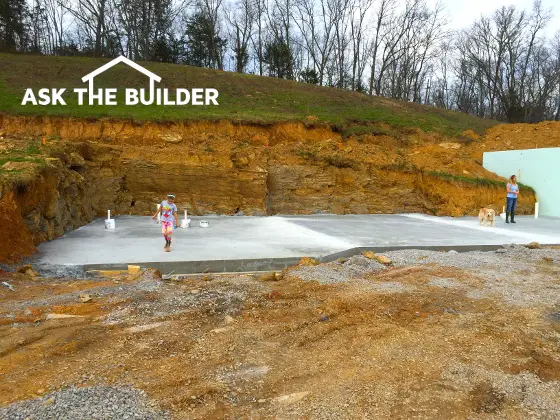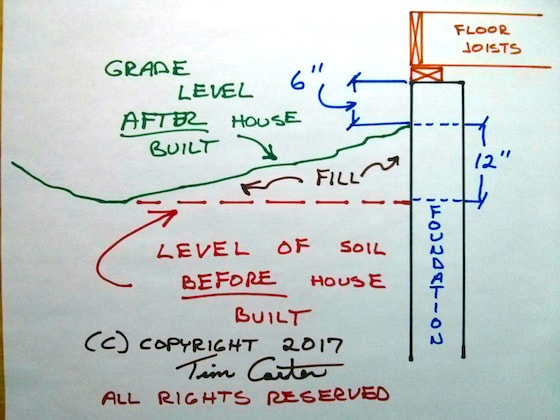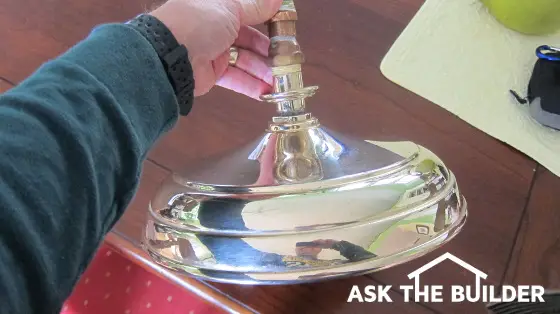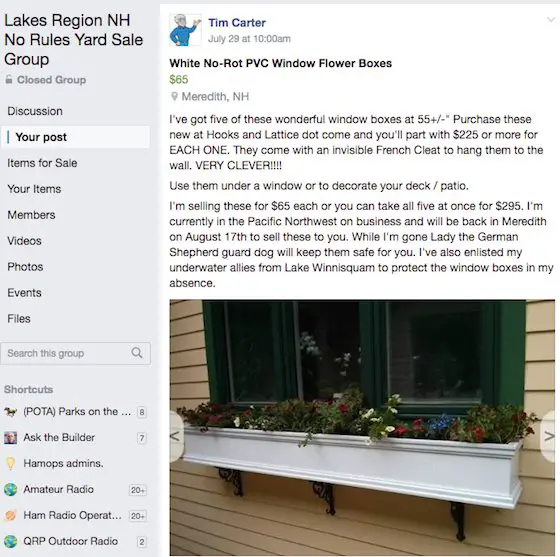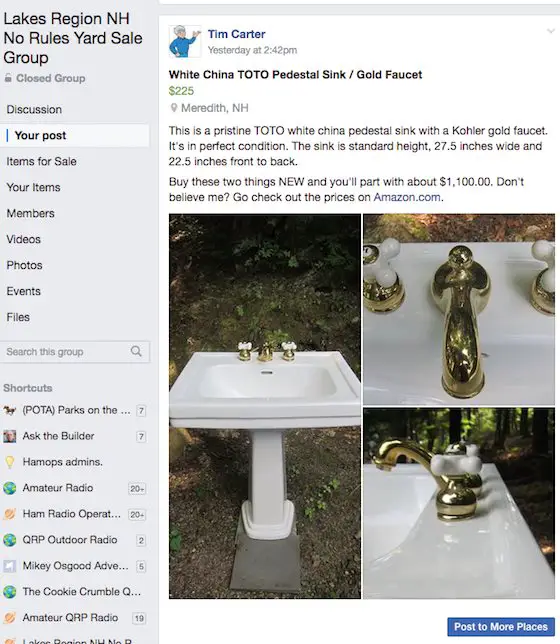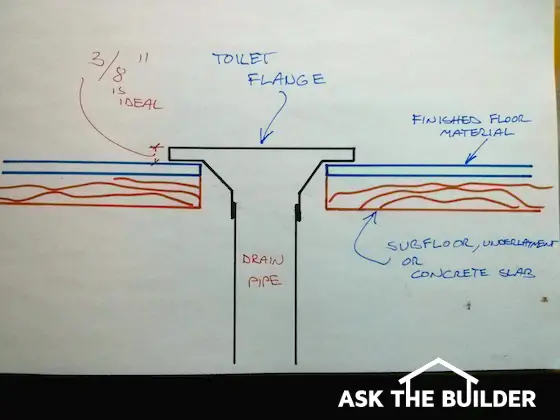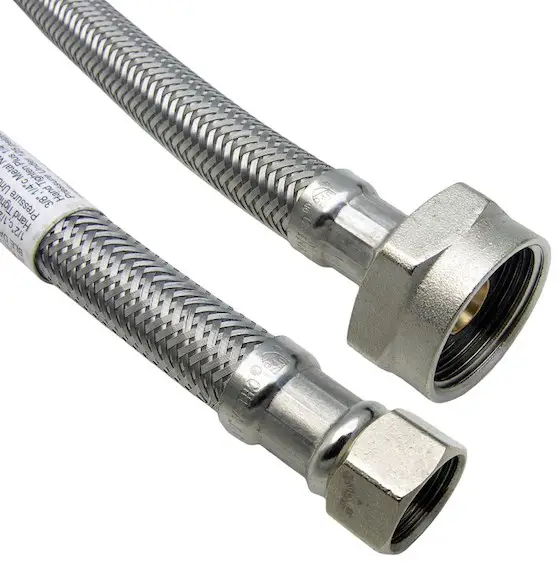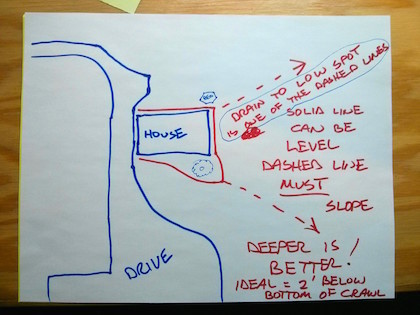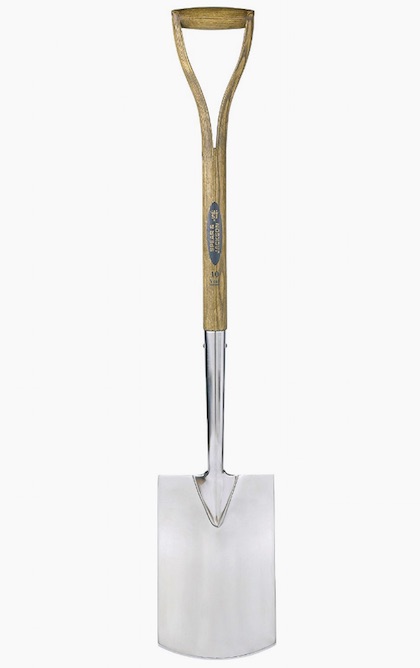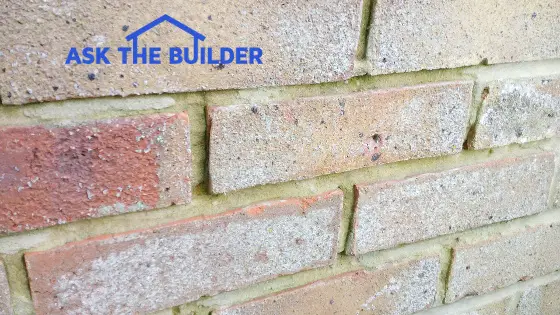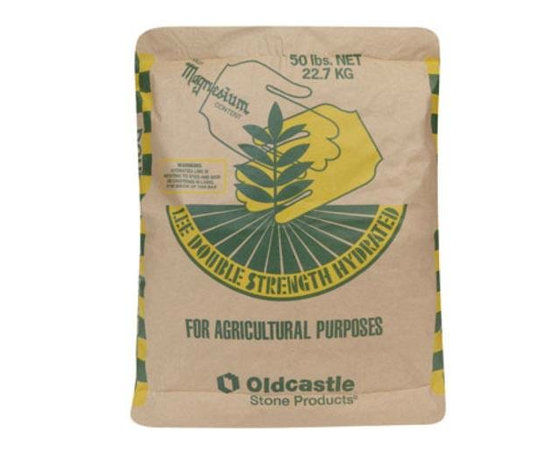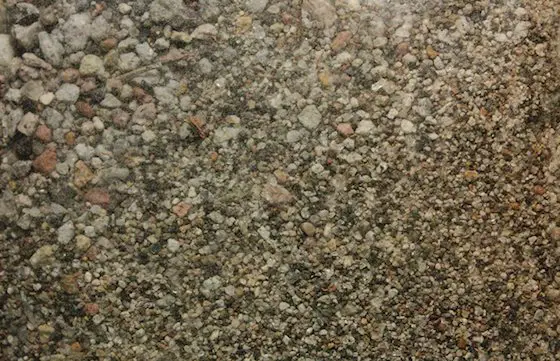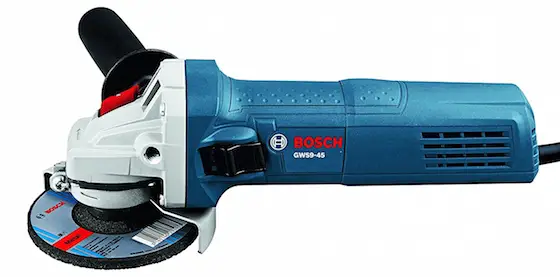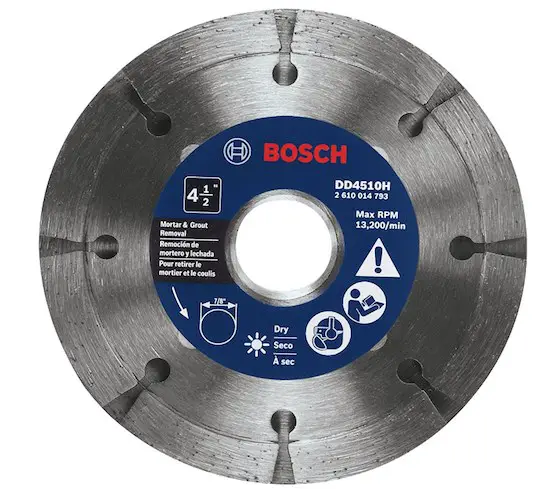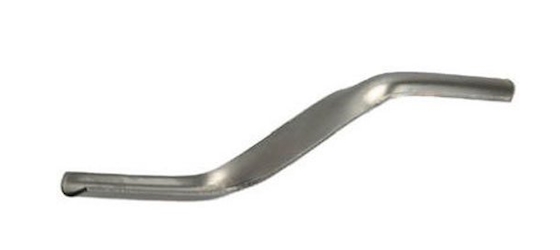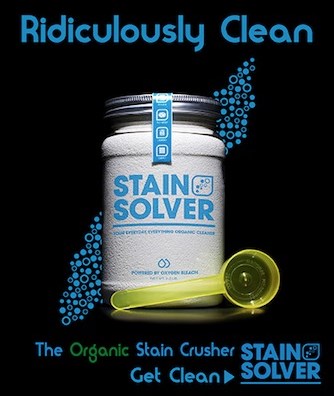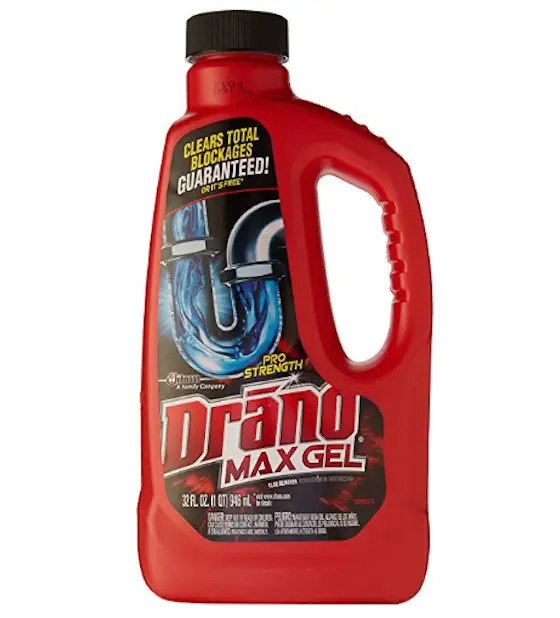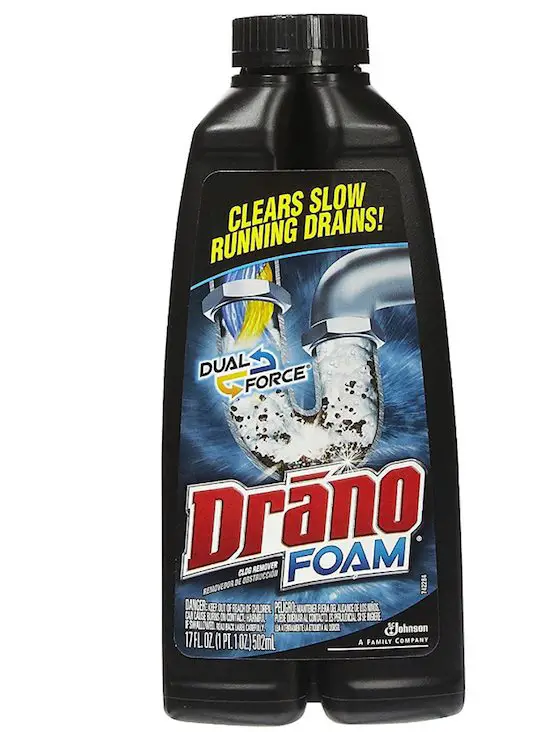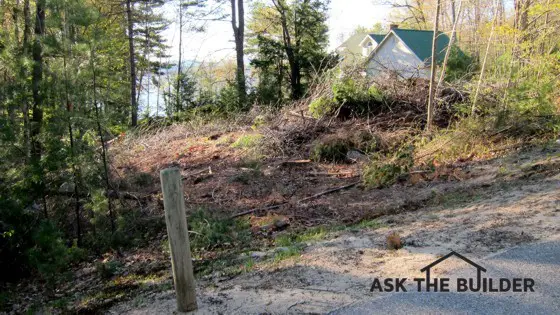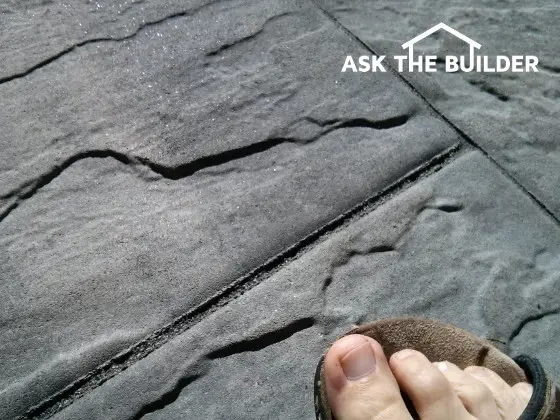
You can see the hardened polymeric sand in the joint between the two pavers. It comes in different colors to compliment the color of the pavers. Toes in photo for scale. (C) Copyright 2017 Tim Carter
"Polymeric sand is best described as outdoor grout. Depending on the manufacturer, it’s a blend of different colored sand grains as well as chemical binders or glues that are activated by water."
Polymeric Sand Installation TIPS
- Pavers must be dry as a bone
- Brush sand into joints at a 45-degree angle
- Use a backpack blower to remove all dust
- After water activation, blow off all standing water
- CLICK HERE to Get Tim's FREE & FUNNY Newsletter!
DEAR TIM: I need to use polymeric sand on an upcoming job. I’ve never used it before and some of the instructions and videos I’ve watched are confusing and have conflicting information in them.
Have you used this material before? Did you find it hard to work with?
I’m terrified of having mottled stains on my new pavers! What did you do to ensure your job came out perfect? Diane K., Roselle, IL
What is Polymeric Sand?
Polymeric sand is a newer product that’s creating lots of interest among homeowners, contractors and material suppliers that sell the product. It’s fascinating to me to see how many building products mature as they march through time.
What Sand Was Used Before Polymeric?
When paving brick were first brought to market back in the early 1980s, the joints between the brick were just filled with fine sand.
It didn’t take long for homeowners to grow weary of this methodology because weeds would quickly grow and any cleaning efforts washed away the sand.
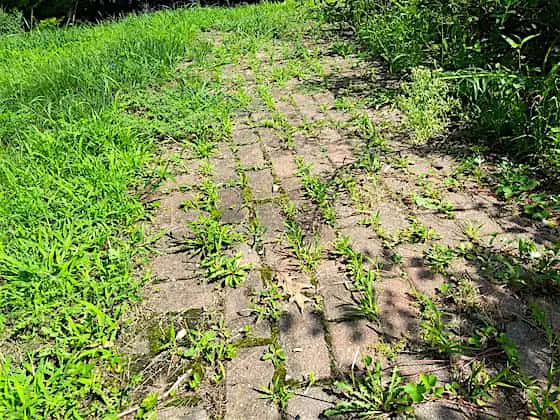
This is a paver sidewalk with out-of-control weeds growing out of the normal sand. The sand can be removed with a pressure washer and replaced with polymeric sandy. Copyright 2018 Tim Carter
Free & Fast Bids
Is Polymeric Sand Like Grout?
Polymeric sand is best described as outdoor grout. Depending on the manufacturer, it’s a blend of different colored sand grains as well as chemical binders or glues that are activated by water.
When the polymers dry and cure the sand between the joints gets quite hard and it cements the pavers together. Weeds won’t grow between the joints and the sand doesn’t wash away.
What Ingredients Make Polymeric Sand Hard?
Some polymeric sand might have a blend of Portland cement, dry colored pigments as well as the polymer adhesives. The key thing to realize is you can get the sand mixture in different colors that will match or compliment the color of your pavers.
You can even use the polymeric sand on existing paver installations that have just sand in the joints, but it’s quite a bit of work to remove the existing sand without disturbing the pavers.
Have You Used Polymeric Sand?
It just so happens that I recently had the good fortune to use polymeric sand at my own home. I constantly preach to my free newsletter followers to read product label instructions before using a product.
Are the Polymeric Sand Instructions Confusing?
I did that with my bags of sand and came away quite confused myself. I then went online to watch a few videos, some done by my manufacturer, and discovered they had a few oversights that I felt were very important to mention.
Should the Pavers Be Dry Before the Polymeric Sand Installation?
First and foremost, to get a great job the pavers need to be dry. The dryer the pavers are, the better the job’s going to turn out. You want even the sides of the joints dry if possible so no moisture inhibits the dry polymeric sand from flowing to the bottom of each joint.
Should the Pavers Be Clean?
The top surface of the pavers needs to be clean. If somehow the pavers got muddy during the installation, you need to clean off that mud. If you don't clean off the mud, the mud will get mixed in with sand as you brush it into the joints.
The mud will cause the sand to not bond as well and it will create color differences in the finished sand.
You'll have to use water to clean off the mud and this may mean it could take days for the pavers to dry after you wash the tops of the pavers. So be it. I can’t emphasize enough how dry pavers are mission critical.
How Important are the Polymeric Sand Batch Numbers?
Be sure all bags of the polymeric sand come from the same batch. Look at the labels to ensure they all were made at the same time. If you have any doubt, open the bags and mix the dry sand all together in a large container to ensure the color is the same.
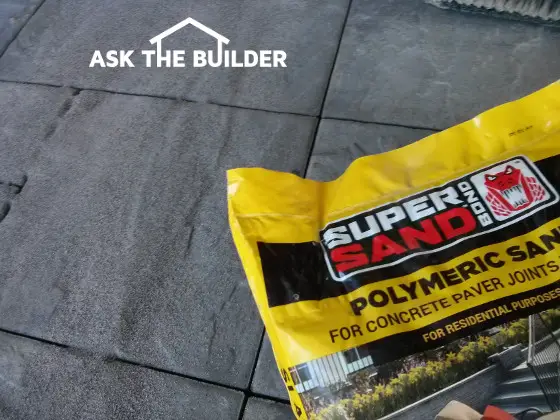
This is the polymeric sand I used on my pavers. I've poured some sand on the pavers to the left of the bag. It's such a close color match you might not have seen it! You can see it flowing into the joints between the pavers in the upper left corner of the photo. (C) Copyright 2017 Tim Carter
How Do You Spread the Sand?
I used a large floor broom with medium bristles to install the sand. The dry sand flowed into the joints with no effort at all.
How Do You Keep the Sand Even with the Pavers?
I went back and forth across the joints at a 45-degree angle. Most of the videos I watched showed the broom strokes parallel or at a 90-degree angle. Doing it that way can cause the broom to dig out some of the sand from the joints.
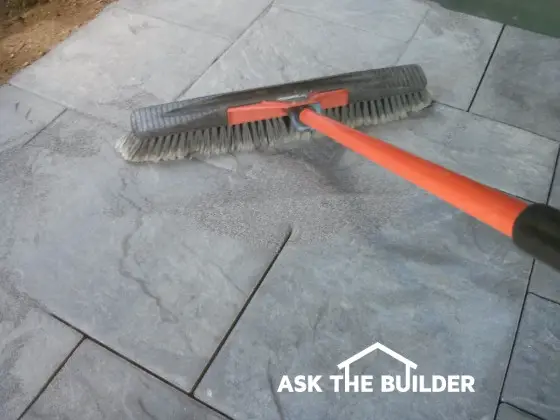
Sweep across the joints at a 45-degree angle. (C) Copyright 2017 Tim Carter
You want light finish strokes as you try to brush the sand from the pavers. Don’t dig the sand out of the joints.
How Do You Prevent Staining?
I read many nightmare stories online about stained pavers during installations gone bad. The common cause was the installer failed to get off all the sand and dust from the pavers before activating the sand with the water.
What is the Best Brush to Use?
I own a fantastic brush I bought years ago to wash the side of my house. It’s a brush made to wash RVs. The bristles are stiff enough that they don’t flop but soft enough that they don’t scratch automotive paint. It’s a perfect brush to do a fine brushing of the pavers.
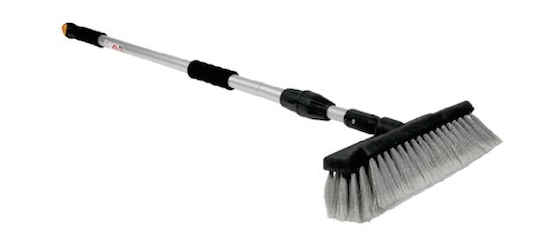
This is a perfect brush to clean vinyl siding. It's got an adjustable handle and the perfect bristles that remove dirt loosened by using Stain Solver oxygen bleach. CLICK THE IMAGE NOW TO HAVE THIS BRUSH DELIVERED TO YOUR HOME.
How Much Sand Must be Brushed Away?
I took my time and carefully brushed all the sand grains and as much dust as possible off each paver. I was careful to not dig any sand out of the joints.
Should You Use a BackPack Blower To Remove Dust?
After doing this, I used a backpack leaf blower to blow off any of the colored pigment dust. I was shocked to see how much dust came off the pavers even though I thought I had brushed them well.
IMPORTANT TIP: Do NOT skip this step - use a blower.
How Do You Activate the Polymeric Sand?
Wetting the sand with a gentle nozzle that acts like a soft rain shower is what activates the polymeric sand. You don’t want a direct stream that can dig sand out of the joints.
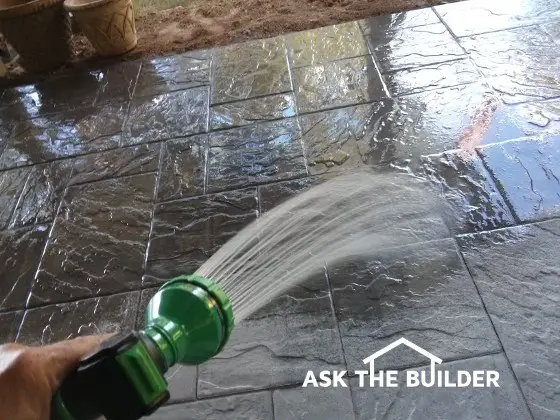
Use a hose nozzle that produces a gentle shower. Move it back and forth and just put a light amount of water on the pavers. (C) Copyright 2017 Tim Carter
Move the nozzle across the pavers back and forth and just put a light amount of water down. Most instructions say to wet the pavers several times. I did it three times in about fifteen minutes.
Should I Remove Standing Water?
After turning off the hose, I immediately fired up my backpack leaf blower. I blew off all standing water from my pavers to complete the job.
Standing water will have the color pigments in it and can foul the pavers. If you allow this pigmented water to dry in puddles, you'll end up with blotchy pavers.
Get all the water off the pavers and be careful not to blow any sand out of the joints. Do all this and you’re pavers will look perfect in two hours!
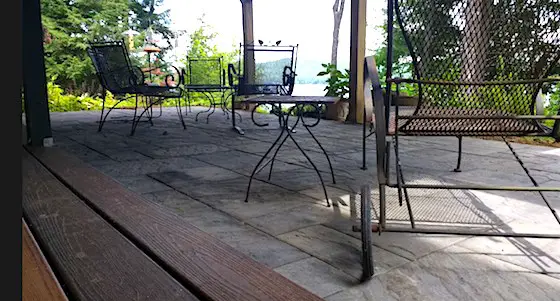
Here's my finished paver patio. It's going to last decades so long as no one pressure washes it. Pressure washing removes the colored cement paste that's coating the sand and gravel in the concrete. Copyright 2017 Tim Carter
Column 1210
